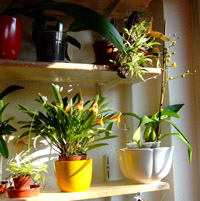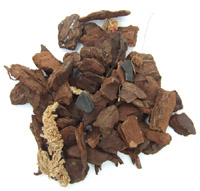There is still a long-held belief that delicate, difficult-to-grow plants are still associated with orchid keeping. However, this is only partially true. There are many species and hybrids that can be easily grown and flowered in our climate, and their upbringing is a success even for novice orchid lovers. The point is to always choose the plant according to the prevailing conditions, not from flare-ups. First we know the exact name of the orchid, look for its needs, and if it is the same as the environment we provide, we will only get it.
The two most basic conditions for keeping orchids are to provide plenty of light and high humidity.

Light: Keeping the plant in a flat near a bright east, south or west facing window ensures high light demand, and in summer many plants (Cattleya, Cymbidium, Dendrobium) can be placed in the garden in the shade of deciduous trees or in a shaded place. Many plants need to be protected from the scorching sun in summer because their leaves may turn red or burn, (e.g. Bulbophyllum varieties), while in rare cases some species bloom in a scorching sunny position (Dendrobium speciosum) gradually accustomed to strong sunlight.
Humidity / Irrigation: In the case of potted orchids, high humidity can be provided by clay granules or gravel placed under the pot. This allows water to stand under the plants without damaging the roots themselves. In the case of plants attached to a cork block or tree bark, it is recommended to spray several times a day, especially in summer, in high heat. Sphagnum moss should be placed at the root of moisture-loving species. Always use lime-free water for irrigation. Irrigation with rainwater is best, if it is not available, boiled and then cooled tap water.
Air movement: Due to the moist, humid habitat, most tropical orchids are sensitive to air movement, which ensures that they do not rot or become fungal. This need is somewhat difficult to meet in room conditions. It can be solved by placing it in the garden in summer or with an open window (not drafts!), And in winter it can be created by installing small propellers, but the more common species and hybrids do not suffer in the absence of it.
Repotting: Orchids should be transplanted approximately every 2-3 years into a special orchid planting medium that has good water permeability, a loose structure, and ensures aeration of the roots. It usually contains pine bark, peat, Sphagnum moss, charcoal, coconut fiber and perlite. Today you can also get pre-packaged orchid lands, but among them there are some that still need to be loosened with bark because it is relatively compact, not all orchid roots can ventilate it properly. The use of common potting soil is forbidden because it is too dense, the roots do not get air and rot in it, and the plant is destroyed! You can choose a clay pot as a pot, which is better ventilated but dries out sooner, so it needs to be watered more often, but larger plants are not pulled by its weight. Another disadvantage is that the roots adhere tightly, making transplantation more difficult. You can choose a special, transparent plastic orchid pot, the advantage of which is that it holds moisture better, and we can always see when it dries out, when it needs to be watered again. (As long as the roots are green, they get enough moisture if they are whitish or grayish, it's time to water.) You can also choose an opaque plastic pot, in which case the watering due date can be determined from the weight of the pot: at light weight the planting medium is already dry. so you can irrigate again. And Vendas and certain other species feel best in a basket, from which their huge roots or inflorescences can protrude freely. Stanhopea, for example, needs to be planted in a basket because its flower bursts out by drilling down the planting medium.

Fertilizing: Orchids need regular, balanced feeding. In winter, less frequently, about every third to fourth watering, in summer more often, due to the start of growth, about every second watering, add nutrient solution diluted to half or one third of the factory specification. The nutrient solution contains a balanced content of the three main constituents: nitrogen (N), phosphorus (P) and potassium (K), but chlorine and lime should not be present in any way. As a general rule, we prefer to give less food several times than rarely much. Although there are flowering initiation nutrients that contain the three components to varying degrees, the flowering of plants is still determined by environmental influences rather than the nutrient solution.
Once one immerses oneself in collecting orchids, it is certainly difficult to get rid of that passion, and the limit of one’s collection is limited only by the space available to one. The good news is that you don’t have to have a large apartment or greenhouse to get a pretty small collection, as there are many easy-to-handle, reliably blooming miniature and small block orchids that can even be kept on the windowsill in a beautifully designed florarium (or supercharged aquarium). . We can try Rodriguezia, Tolumnia, Brassavola, Pleurothallis, Encyclia, the slightly more uncharacteristic flowering Stelis species, or the beautiful flowering Dinema polybulbon, with tiny clustered Microterangis hildebrandtii with a high probability of success.
If larger plants can fit in the apartment, Vendas and their relatives or Bulbophyllums will have a good time in a sunny, warm place, Dendrobies, Oncidium, Brassia at average temperatures, and Masdevallias, Dracula, Miltonia, Cymbidium, Odontoglossus, Coel.
Paphiopedilums and Liparis orchids tolerate the poorer place. The genus Cattleya is preferred for flower lovers with a garden because the plants kept in the room rarely bloom.
And the almost ubiquitous Phalaenopsis hybrids can be grown successfully even in dry panel housing.